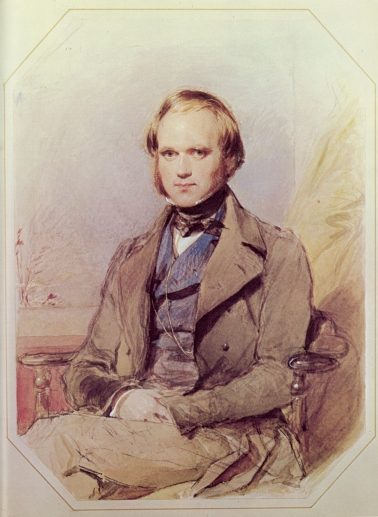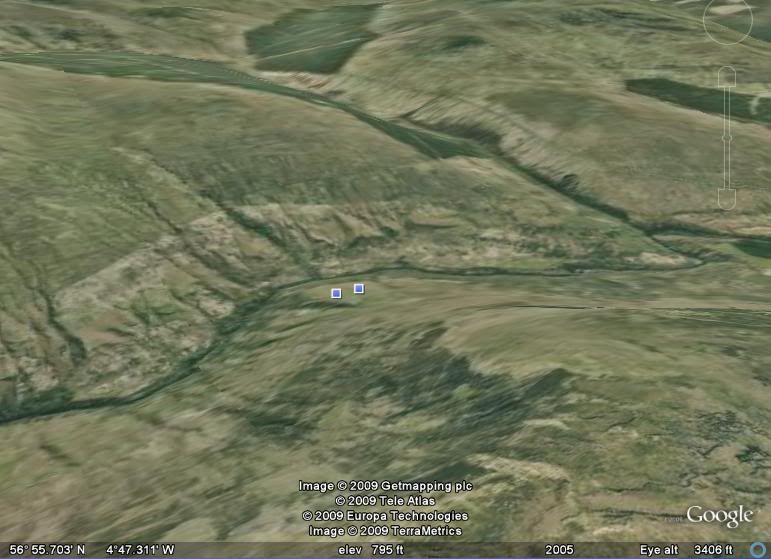
Posted on 11/22/2009 11:20:19 AM PST by JoeProBono
SCOTLAND. It’s a long way from anywhere to this particular spot on the steep flank of the Hill of Bohuntine, gazing east across the great green heathery abyss of Glen Roy to where it admits the mouth of the more gently scooped-out Glen Glaster. Certainly if you’re coming from the States—from Petersburg, Kentucky, say, or Dayton, Tennessee, or any other of the thousand places where you would be safer lighting a Marlboro off a burning American flag than being caught with a copy of On the Origin of Species—you’re going to find it quite a hike.
But you’ll be glad you came, I promise, and a grateful Lord will one day wash your tired feet in Paradise. For it is from here, looking east, that you get to see the truth—long known in the scientific community, and as a consequence long kept quiet—that Mr. So-Called Charles Darwin, with his dumb beard and his dumb theories, born 200 years ago this very year, was wrong. Not just a little bit wrong. A lot wrong. Wronger than a bluetick hound on moonshine. Wronger than a Dixie Chick wearing a blindfold. And he could, additionally, be a real pain in the you-know-where about it.
Happy birthday, smart guy.
The year was 1836. A 27-year-old Charles Darwin, not yet bearded, fresh from chundering his way around the planet in the poop cabin of the HMS Beagle, disembarked in Falmouth, England, on a mission to cement his growing reputation as a Grand Fromage of Science. His first destination, however, after a two-year pit stop to shower and change his top hat, was not, as you might imagine, the London Zoo, nor the Natural History Museum (which had not yet even been built), but rather the modest town of Spean Bridge, high and deep in the rainy and remote Scottish Highlands.
For Darwin was convinced at the time that geology was the way to go. He had studied the finches and had the thoughts that would culminate two decades later in On the Origin of Species, but geology was the hot new field, and Darwin, what was more, had a hot new theory on which he hoped to pole-vault into the big time.
Spean Bridge was and is the nearest cluster of dwellings to an eye-catching and mysterious wonder of the natural world known as the Parallel Roads of Glen Roy. At the time, this spot was to people interested in geology rather what Dallas’s Dealey Plaza is today to people interested in conspiracies.
If you wanted to run with the big dogs of this exciting new field—your Charles Lyells, your Adam Sedgwicks, your Henry De la Beches—the first thing you did was make a beeline for Spean Bridge, spend a few days tramping up and down enormous hills making sketches in the rain, then return to civilization with a novel theory of why there were three flattish shelves running for miles along the steep sides of Glen Roy (a glen, in Scottish, being a valley) and along the flanks of various nearby hills. One theory, popular among the locals, was that the roads had been the private hunting tracks of Fionn MacCumhail, a.k.a. Fingal, the mythical Celtic giant. This was silly—giants aside, what the hell is a hunting track?—and by the time Darwin got there, it was generally agreed that the shelves were actually ancient beaches, each formed over hundreds of years when the glen had contained a lake—a lake that for some reason had stood at three different levels on three different multicentury occasions.
The problem with the lake theory, the conundrum that made it worthy of great men’s attentions, was that Glen Roy is not properly shaped to contain a lake, let alone three of them. At its northeastern end, the glen’s steep sides do converge, like the sides of a ship at its prow, but to the southwest the valley widens and opens up, allowing all rainfall and streamwater to drain instantly away and further dampen the rest of Scotland. For Glen Roy to function as a lake would require the construction of a huge barrier, several miles long and nearly half a mile high, to block off the valley’s mouth and retain the waters within. Upon he who could explain where said barrier had come from, let alone where it had vanished to—presumably in three stages, accounting for the three different beach heights—it was generally agreed that no small quantity of scientific glory would be heaped.
Enter Darwin, who reckoned he knew a thing or two about mysterious parallel roads, having visited those at Coquimbo on the coast of Chile. While walking the Coquimbo roads, Darwin had filled his pockets with seashells and, having lived through an earthquake just a few weeks earlier, concluded reasonably that the Coquimbo roads were ancient beaches of the Pacific Ocean, which was right there, and that they stood at their present level not because the ocean had sunk or somehow drained away but because the earth itself had risen, as it practically had just then, right beneath his feet. If he could show that the roads in Glen Roy had been formed by the same process as those in Coquimbo on the other side of the world, then he could propose a theory of global “crustal uplift” as the prime mover in the creation of the continents, which would be an impressive, career-making thing to do.......

ROFLMAO Nobody ever accused Darwinists of a lack of imagination. LOL What a victim complex!!!
The article is, to use the one overly cleaver 19th century word not used by the author, poppycock.

I’ve always wanted to be a Grand Fromage.

Wow, that is ‘Grand.’

Speaking of Scottish geology, here's my current read, a biography of James Hutton. As an inspiration for Lyell and in turn Darwin, he is an under appreciated giant in the history of science. The book also provides a good deal of information on the events leading up to the Scottish Enlightenment and the unification of England and Scotland. The man also was one of the original party animals, apparently spending a not insignificant amount of time getting drunk with luminaries such as Ben Franklin, Adam Smith, James Watt, Robert Burns, Walter Scott, and David Hume. Makes my friends seem rather, shall we say, pedestrian?
Dear Friend:
The photo is priceless; except that the gentleman is holding up the wrong digit!! ;oD

Poppycock? Not so fast...
“...we don’t want to find ourselves 200 years from now still defending the obviousness of natural selection from those poor souls who would rather not grasp it...”

Welllll, here is a superview of the view from Bohuntine Hill ( bottom right ) eastward, showing the "roads" across the valley and the presumed col leading to the east.
Following it in Google Earth, it seems to lead up into the highlands, so would not be a drainage route.
Is this the basis of your asservation?


A mand ahead of his time, but unlike Wegener, not so far ahead he died before he could say "I told you so".





Disclaimer: Opinions posted on Free Republic are those of the individual posters and do not necessarily represent the opinion of Free Republic or its management. All materials posted herein are protected by copyright law and the exemption for fair use of copyrighted works.